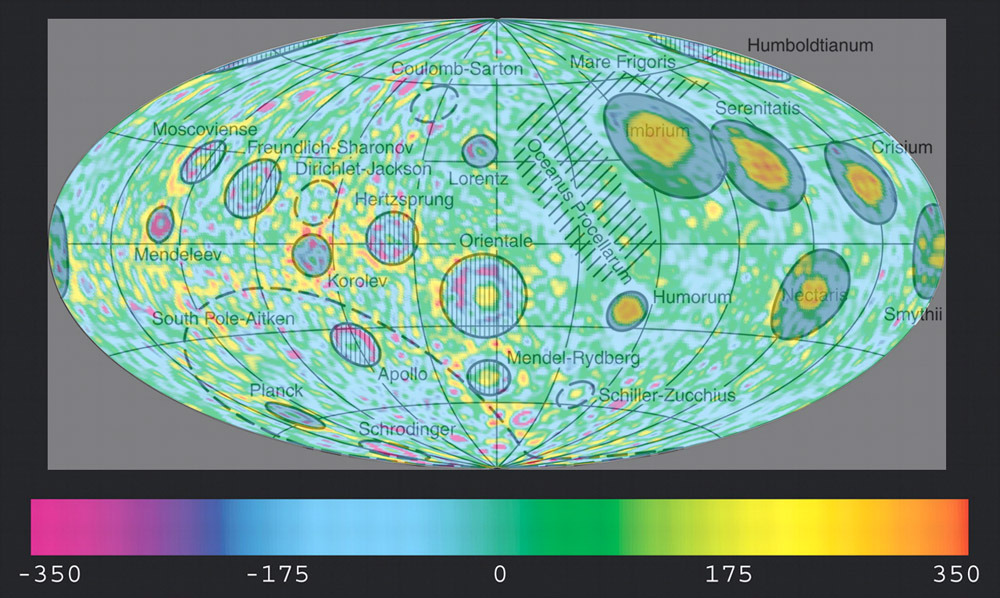September 6, 2009
Mascons And Masdefs

composite image from figures 2 and 4 of Namiki and colleagues article in Feb 13, 2009 Science magazine; colors represent gravity anomalies
Gravity anomalies reflect differences in density (and probably composition) at depth. This image shows deviations from gravity uniformity (zero in the color scale at bottom) for the lunar nearside (right half) and farside. Before Kaguya, with its two sub-satellites that allowed accurate tracking, farside gravity was poorly known. With their new data Kaguya scientists have discovered that the gravity field of the near and farside impact basins differ. Notice that Imbrium, Serenitatis and other large nearside basins have large positive anomalies in their centers - the famous mascons or mass concentrations. In contrast, farside basins have small central mascons and are instead characterized by very large annular masdefs (my new word for mass deficiencies) with small annular mascons. The Japanese researchers propose that when the basins formed the farside crust was more rigid than the nearside and thus preserved thickness and composition differences associated with ring topography, resulting in rings of gravity anomalies. The nearside crust was warmer and deformed more, causing the mare ridges and concentric faults. The fabulous new data allows this first interpretation, there will be alternatives too.
Chuck Wood
Technical Details
CAW constructed the image by combining the free-air gravity anomaly colored map and the location map of Namiki and colleagues.
Related Links
Noriyuki Namiki and colleagues (2009) Farside Gravity Field of the Moon from Four-Way Doppler Measurements of SELENE (Kaguya). Science 13 February 2009 323: 900-905 [DOI: 10.1126/science.1168029].
Yesterday's LPOD: Riotous Rilles
Tomorrow's LPOD: Five in a Row (And an Extra Treat)
COMMENTS?
Register, Log in, and join in the comments.



